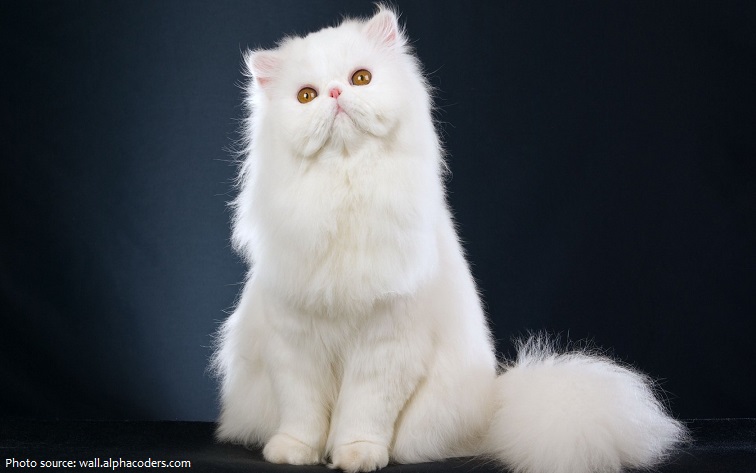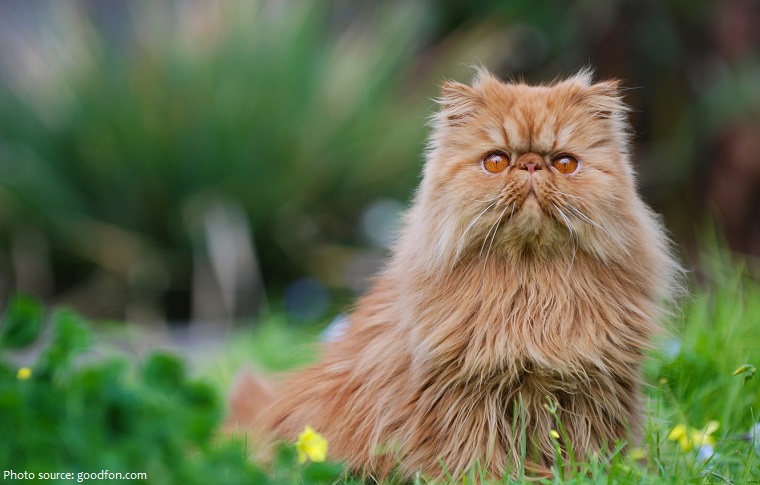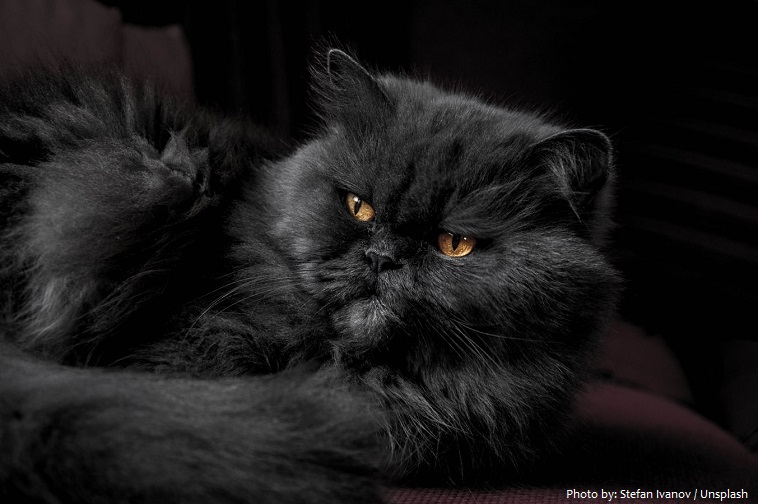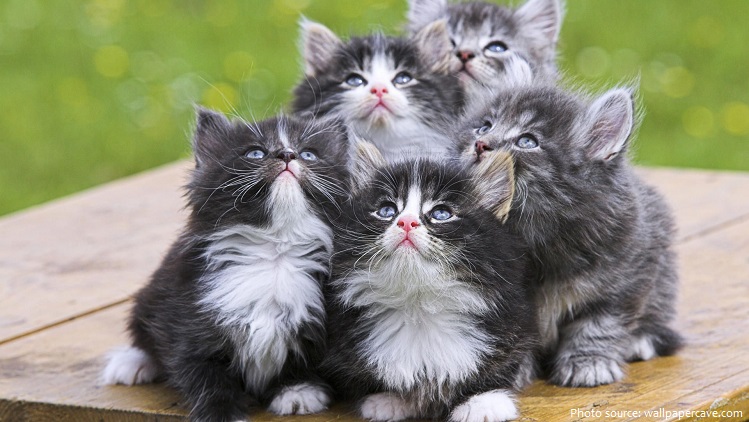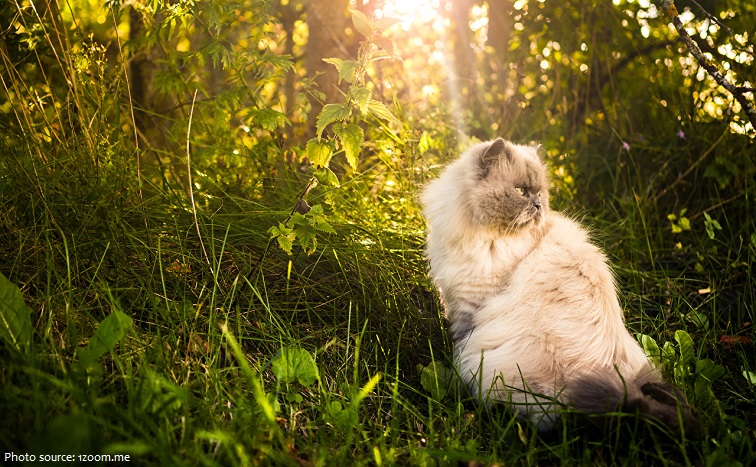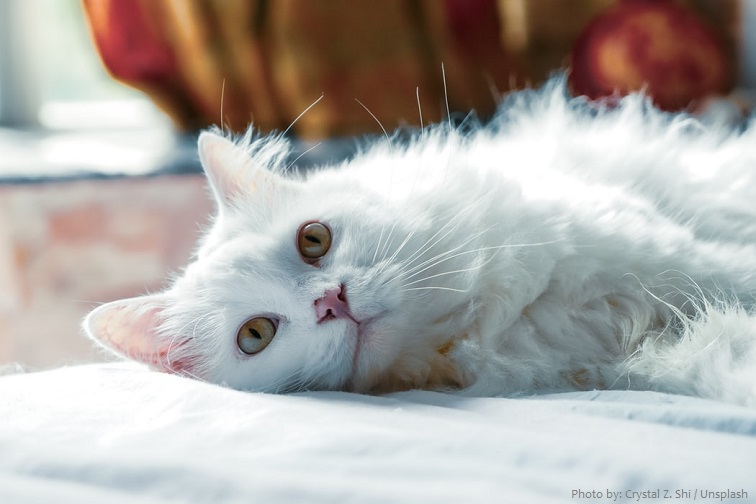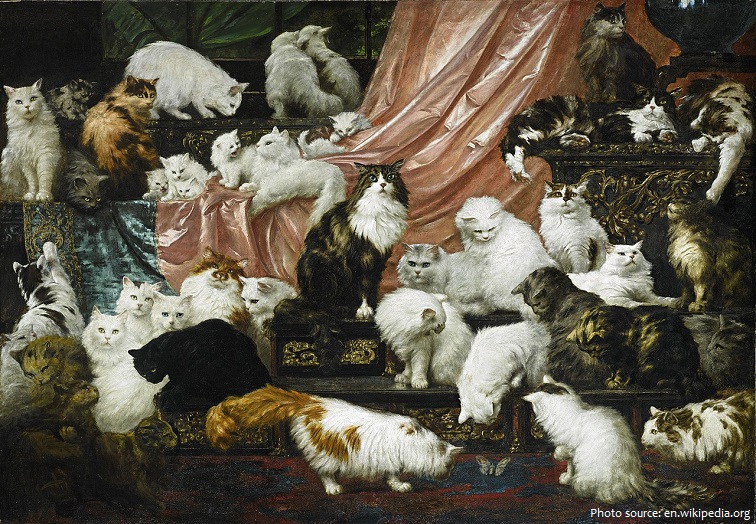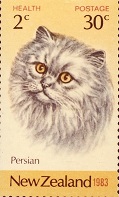The Persian cat is a long-haired breed of cat characterized by its round face and short muzzle.
It is also known as the “Persian Longhair” or “Longhair.”
In the Middle East region, they are widely known as “Iranian cat” and in Iran they are known as “Shiraz cat.”
It is called “Persian” because it was exported from Iran, or ancient Persia.
The Persian cat is one of the oldest cat breeds and can been seen depicted in hieroglyphics as early as 1684 BC.
Since 1520 there is the first mention of the long-haired cats in Europe. But even earlier, about 300 years ago, the first Persian cats brought a gift as a curiosity from the east.
The first documented ancestors of the Persian were imported from Khorasan, Iran, into Italy in 1620 by Pietro della Valle, and from Angora (now Ankara), Ottoman Empire (Turkey), into France by Nicholas-Claude Fabri de Peiresc at around the same time.
The first Persian cat was presented at the first organized cat show, in 1871 in the Crystal Palace in London, England, organized by Harrison Weir.
Recognized by the cat fancy since the late 19th century, it was developed first by the English, and then mainly by American breeders after the Second World War.
The Persians are perhaps the quintessential “luxury” cat — that is, the cat who expects to be kept in the lap of luxury.
They are, however, one of the most popular cat breed in the world.
The lifespan of a Persian cat is between 12 and 17 years, with a median age of 14.1 years.
Persian cats are medium sized, usually weigh between 3.2 and 5.4 kilograms (7 and 12 pounds), and measure from 25 to 38 centimeters (10 to 15 inches) tall.
The Persian cat has a stocky, short-legged body, has a broad, round head, a snub nose, and a short, heavily haired tail. The large, round eyes may be blue, orange, golden, green, or copper – colored, depending on the color of the cat. The soft, finely textured coat forms a heavy ruff about the neck.
The Persian cat is bred in a number of colour varieties. The solid, or self, colours are white, black, blue, red, and cream. Patterned coats include shaded silver and black; silver, brown, blue, or red with darker markings; white finely ticked with black; cream, red, and black (tortoiseshell); calico, or tortoiseshell and white; blue-gray and cream intermingled (blue cream); and bicoloured. The colours of tortoiseshells, calicos, and blue creams are genetically linked with the sex of the cat. Almost all are females, and most of the few males are sterile. Blue-eyed white cats may be deaf.
Since Persian cats have long, dense fur that they cannot effectively keep clean, they need regular grooming to prevent matting. To keep their fur in its best condition, they must be brushed frequently.
The art world and its patrons have long embraced their love for the Persian cat by immortalizing them in art.
A 6-by-8.5-foot artwork that’s purported to be the “world’s largest cat painting” sold at auction for more than $820,000. The late 19th-century oil portrait is called My Wife’s Lovers, and it once belonged to a wealthy philanthropist who commissioned an artist to paint her vast assortment of Turkish Angoras and Persians.
Other popular Persian paintings include White Persian Cat by famous folk artist Warren Kimble and Two White Persian Cats Looking into a Goldfish Bowl by late feline portraitist Arthur Heyer.
The beloved Persian cat has made its way onto the artwork of stamps around the world.
A Persian tale claims the Persian cat was created magically. The great Persian hero Rustum, out on campaign, one night saved a magician from a band of thieves. Rustum offered the older man the hospitality of his tent and, as they sat outside under the stars, enjoying the warmth of a fire, the magician asked Rustum what he wished for as a gift in repayment for saving the man’s life. Rustum told him that there was nothing he desired since everything he could want, he already had before him in the warmth and comfort of the fire, the scent of the smoke and the beauty of the stars overhead. The magician then took a handful of smoke, added flame, and brought down two of the brightest stars, kneading them together in his hands and blowing on them. When he opened his hands toward Rustum, the warrior saw a small, smoke-grey kitten with eyes bright as the stars and a tiny tongue which darted like the tip of flame. In this way, the first Persian cat came to be created as a token of gratitude to Rustum.
